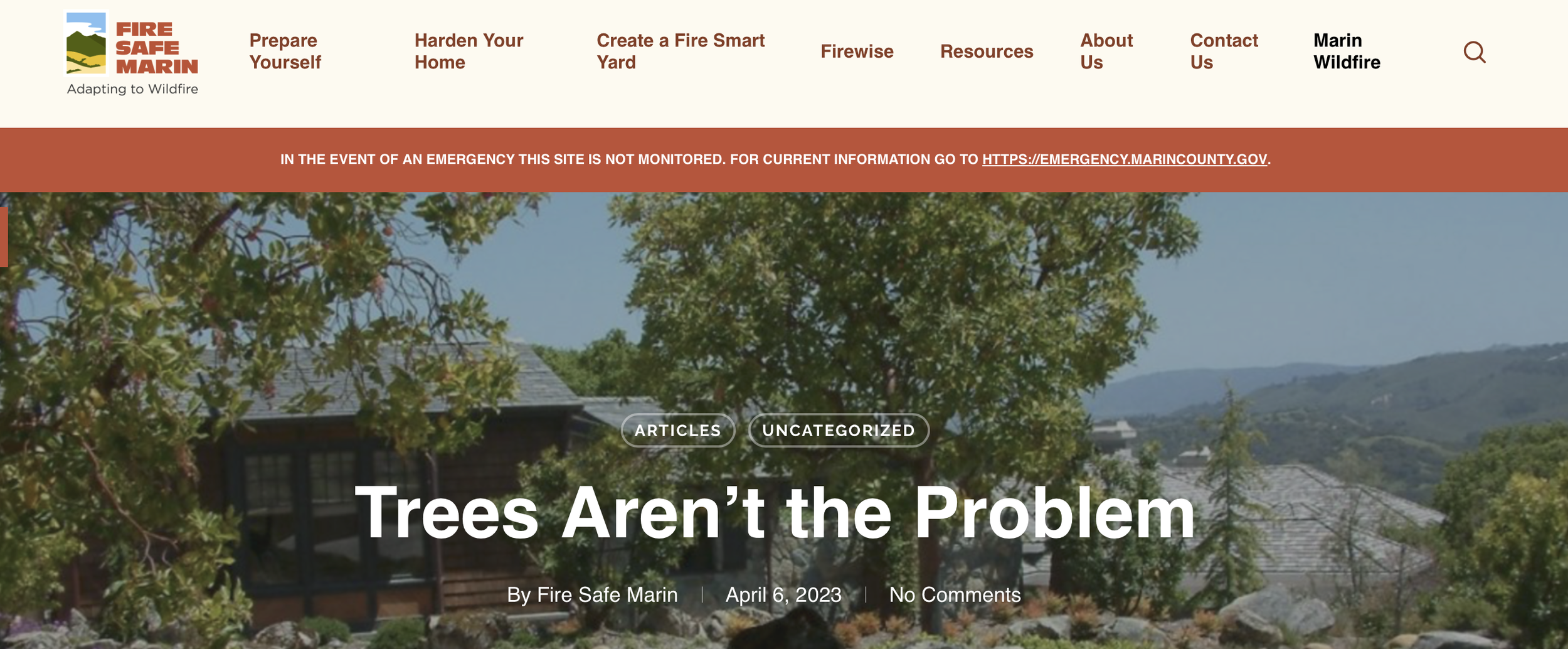Living with Fire -
Creating Defensible Space
Research shows: Homes are most at risk from wind-driven embers, which can travel long distances—crossing rivers, and even cleared firebreaks. While tree removal might reduce fire intensity, it doesn’t ensure a home will survive. A better strategy is to prioritize home hardening and carefully maintain the first 5 feet around structures—also known as Zone 0—to reduce ember ignition risk.
In this presentation Todd Lando, Battalion Chief and Wildfire Hazard Mitigation Specialist, discusses defensible space, applicable fire codes and ordinances and busts myths as it relates to creating defensible space. His advice can be used in San Mateo County as well.
Photo from Marin Fire Chief Webinar above showing homes burned but not Eucalyptus. The Eucalyptus were maintained.: NY Times reported that 150 homes burned in this wind-driven fire in Scripps Ranch, San Diego in 2003.
Key Take Aways:
Defensible space around a home gives firefighters time to save your home.
A lush, green garden is defensible space with careful plant selection and hardscaping.
Trees, if maintained, are not fuel for fires - healthy, natural forests can become a barrier for your home.
Currently, the law is limited to enforcing these fire deterrent recommendations - it is up to us to make our homes safer with defensible space, and home hardening.
Fire Safe Marin has extensive information about home hardening, landscaping for fire prevention, and defensible space.
Links: Thinning Out Forests
Summary:
Proecting homes doesn’t require controlling wildfires or removing surrounding forests.
Research shows wind-driven embers, not flames, are the main cause of homes catching fire.
Embers ignite debris in gutters or flammable materials near homes.
“Home hardening” (e.g. fire-resistant materials, screening vents, clean gutters) greatly reduces risk.
Fire Safe Marin Links:
How to Manage Eucalyptus
El Granada Advocates (EGA) promotes a climate-conscious approach to fire resiliency and environmental sustainability. We provide research, news, and articles collected from multiple sources for your convenience. We hope you find it helpful to see different perspectives. We recommend you consult with local environmental experts, certified ISA arborists, and firefighters for best decision making.


